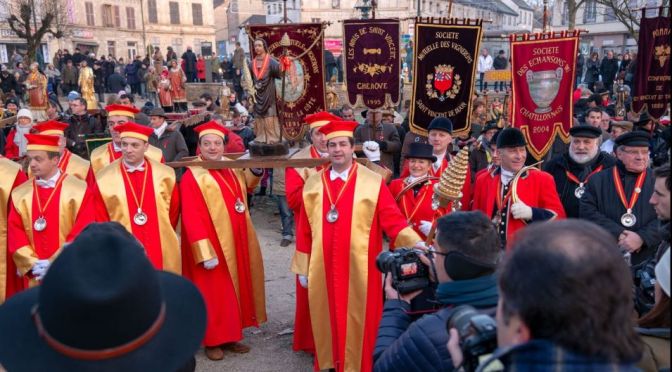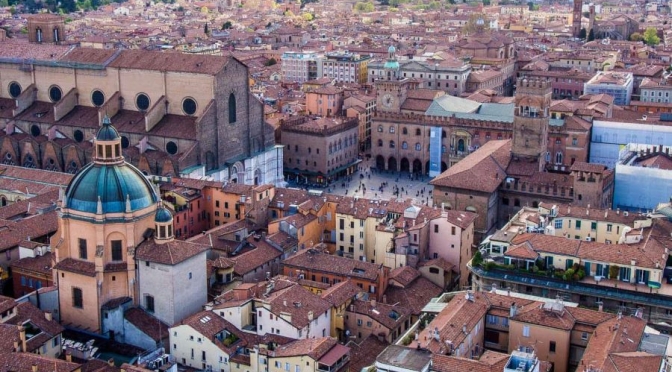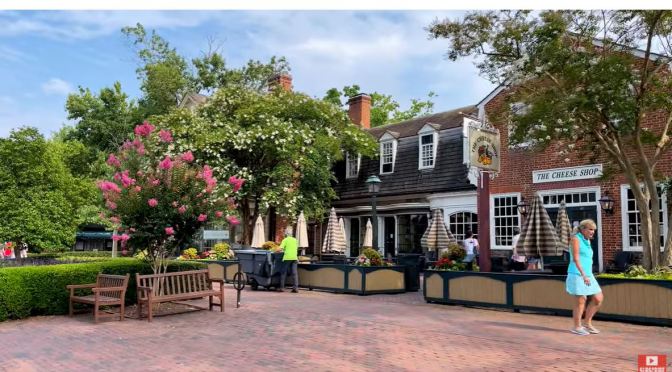In the heart of France’s Burgundy vineyards, where #villages bear the names of grands crus such as Pommard, Nuit-Saint-Georges and Chablis, preparations are underway for the Saint-Vincent tournante #wine #festival; a tradition that goes back to the Middle Ages. Every year, in the last week of January, some 20,000 people are expected for the two-day festival. This time, the villages of Gilly-lès-Cîteaux and Vougeot are the lucky hosts. We catch up with Élisabeth, the head of the not-for-profit organisation, but also Bernard, a volunteer winegrower.
Category Archives: Historical
Podcasts: Conserving Ancient Bagan, Myanmar
“Bagan is actually a splendid site. You can imagine in only in this, like, fifty square kilometers, they have more than 3,000 monuments. And then all the monuments have different styles and different architecture”.
The ancient past of Bagan, Myanmar, is still visible today in the more than 3,000 temples, monasteries, and works of art and architecture that remain at the site. Beginning around 1000 CE, Bagan served as the capital city of the Pagan Kingdom. Many of the surviving monuments date from the 11th to 13th centuries. A number of these temples are still used by worshippers and pilgrims today. A 2016 earthquake, which damaged over 400 structures, brought renewed international attention to Bagan and its future.
In February 2020, a team from the Getty Conservation Institute (GCI) returned from doing intensive preparatory work with international and local colleagues in Bagan to launch a long-term conservation project there. Soon after, the worldwide outbreak of COVID-19 closed borders and halted travel. In February 2021, a coup d’état staged by the Burmese Military plunged the country into further uncertainty.
In this episode, Susan Macdonald, head of Buildings and Sites at the GCI, and Ohnmar Myo, the GCI’s consultant in Myanmar, discuss the history of Bagan, the demands and challenges of conservation there, and their hopes for the future of the site. Myo is a former project officer of the Cultural Unit, UNESCO, and was a principal preparator of the report that confirmed Bagan’s World Heritage Site status in 2019. This conversation was recorded in January 2021, under very different circumstances, but it captures the curiosity, ambitions, optimism, and collaborative spirit that guided the project at that time.
Views: UNESCO Launces ‘Digital Replication’ of Historical Beirut, Lebanon
As part of its response to the explosions of 4 August 2020 at the port of Beirut in Lebanon, UNESCO through its Heritage Emergency Fund has launched a large-scale technical documentation of the city’s historical areas in collaboration with the Directorate General of Antiquities of Lebanon and Iconem. This high-definition 3D scan of the city – obtained through drones and photogrammetry – captures essential architectural data of some of the city’s affected monuments, art galleries and cultural spaces which are required by engineers and architects to plan and monitor the rehabilitation phase.
Beirut is the capital and largest city of Lebanon. As of 2014, Greater Beirut has a population of 2.2 million, which makes it the third-largest city in the Levant region. The city is situated on a peninsula at the midpoint of Lebanon’s Mediterranean coast.
Poetic Views: Museum at Wordsworth Grasmere
The Museum at Wordsworth Grasmere, the second phase of work at the former Lake District home of the great English Romantic poet William Wordsworth and his sister Dorothy, has opened to the public, with all gallery, exhibition design and interpretative overviews by Nissen Richards Studio.
The first phase of work by Nissen Richards Studio encompassed the conservation and reinterpretation of Dove Cottage itself, where William and Dorothy once lived, plus the new identity for Wordsworth Grasmere and the scheme’s signage and wayfinding.
The new visitor journey, designed by Nissen Richards Studio in close collaboration with the Wordsworth Grasmere team, includes a series of threshold moments, such as a totem sign and the setting of words into the walkways, featuring fragments of poems going off in two directions, so that visitors see them clearly on arrival and departure.
The Museum includes a shop and ticketing area, before visitors enter a new, double-height orientation space, where quotations by Wordsworth are set within a dramatic, full-height light wall. Visitors then make their way to a former stable space that houses an immersive introductory film, before stepping over the threshold into Dove Cottage. Visitors return to The Museum via Dove Cottage’s Garden-Orchard, entering an expanded first floor space, loosely arranged into four new galleries. Galleries One and Four are set to one side and Galleries Two and Three to the other, whilst a pause space in between offers views onto the gardens and surrounding landscape.
Walking Tour: Bologna Historic Centre, Italy (4K)
Bologna is the capital and largest city of the Emilia-Romagna region in Northern Italy. It is the seventh most populous city in Italy with about 400,000 inhabitants and 150 different nationalities. Its metropolitan area is home to more than 1,000,000 people. It is known as the Fat, Red, and the Learn’d City due to its rich cuisine, red Spanish tiled rooftops, and being home to the oldest university in the western world.
Originally Etruscan, the city has been one of the most important urban centres for centuries, first under the Etruscans (who called it Felsina), then under the Celts as Bona, later under the Romans (Bonōnia), then again in the Middle Ages, as a free municipality and signoria, when it was among the largest European cities by population. Famous for its towers, churches and lengthy porticoes, Bologna has a well-preserved historical centre, thanks to a careful restoration and conservation policy which began at the end of the 1970s. Home to the oldest university in the Western world, the University of Bologna, established in AD 1088, the city has a large student population that gives it a cosmopolitan character. In 2000 it was declared European capital of culture and in 2006, a UNESCO “City of Music” and became part of the Creative Cities Network.[14] In 2021 UNESCO recognized the lengthy porticoes of the city as a World Heritage Site.
Architecture: Restored Georgian Buildings (UK)

Views: Jousting of the Saracens In Arezzo, Italy
In the picturesque walled city of Arezzo, a medieval ritual is conducted twice each year in which locals don the colors and armor of knights to engage in a jousting competition. Correspondent Seth Doane takes in the pageantry of the Giostra del Saracino, where longstanding family rivalries can play out on horseback.
Roman Ruins: Hadrian’s Villa, Tivoli, Italy (4K)
Hadrian’s Villa is a UNESCO World Heritage Site comprising the ruins and archaeological remains of a large villa complex built c. AD 120 by Roman Emperor Hadrian at Tivoli outside Rome. The site is owned by the Republic of Italy and has been managed since 2014 by the Polo Museale del Lazio.
Travel Views: The Ruins Of Ayutthaya In Thailand (4K)
Ayutthaya is a city in Thailand, about 80 kilometers north of Bangkok. It was capital of the Kingdom of Siam, and a prosperous international trading port, from 1350 until razed by the Burmese in 1767. The ruins of the old city now form the Ayutthaya Historical Park, an archaeological site that contains palaces, Buddhist temples, monasteries and statues. The park is on an island between 3 rivers.
Historic Walks: Colonial Williamsburg, Virginia (4K)
Colonial Williamsburg is a living-history museum and private foundation presenting a part of the historic district in the city of Williamsburg, Virginia, United States.
Its 301-acre (122 ha) historic area includes several hundred restored or re-created buildings from the 18th century, when the city was the capital of Colonial Virginia; 17th-century, 19th-century, and Colonial Revival structures; and more recent reconstructions. An interpretation of a colonial American city, the historic area includes three main thoroughfares and their connecting side streets that attempt to suggest the atmosphere and the circumstances of 18th-century Americans. Costumed employees work and dress as people did in the era, sometimes using colonial grammar and diction (although not colonial accents).[4]










